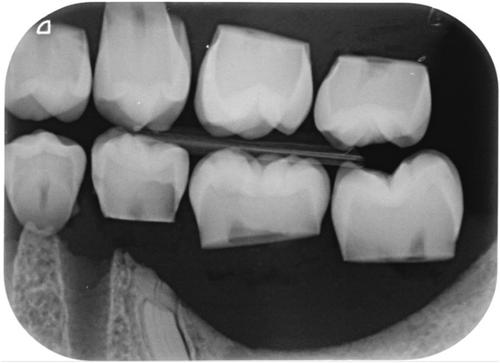Evaluation of the effects of postprocessing settings in digital bitewing radiographs on proximal caries detection
Abstract
Objective
Radiographs are an integral part of detecting proximal caries. The aim of this study was to evaluate the effect of contrast, brightness, noise, sharpness, and γ adjustment of digital intraoral radiographs on the diagnosis of proximal caries.
Materials and methods
In this in vitro study, 40 extracted teeth including 20 premolars and 20 molars with enamel lesions (white spot or dentin discoloration seen through the enamel) were mounted together in groups of eight inside the skull. Bitewing radiographic images of each dental group were obtained by a photostimulable phosphor plate sensor with exposure conditions of 8 mA, 70 kV, and 0.2 s. The images were reconstructed by the built-in software and examined by two oral and maxillofacial radiologists in various settings of contrast, brightness, sharpness, noise, and γ. The teeth were then cut mesiodistally and the presence or absence of caries was confirmed by an oral and maxillofacial pathologist using a stereomicroscope. The data were then analyzed using the κ agreement coefficient, sensitivity, specificity, and accuracy (α = .05).
Results
Adjustment of brightness and contrast led to higher diagnostic performance with an accuracy of 82.5% and 83.8 (for observers 1 and 2, respectively) and 82.5% (for both observers), respectively. Noise adjustment was the least helpful approach for diagnosis of proximal dental caries among other adjustments, with an accuracy of 78.8% and 77.5% for observers 1 and 2, respectively.
Conclusion
Brightness and contrast setting was more efficient in improving the diagnostic potential of bitewing radiographs compared to other adjustments.


 求助内容:
求助内容: 应助结果提醒方式:
应助结果提醒方式:


